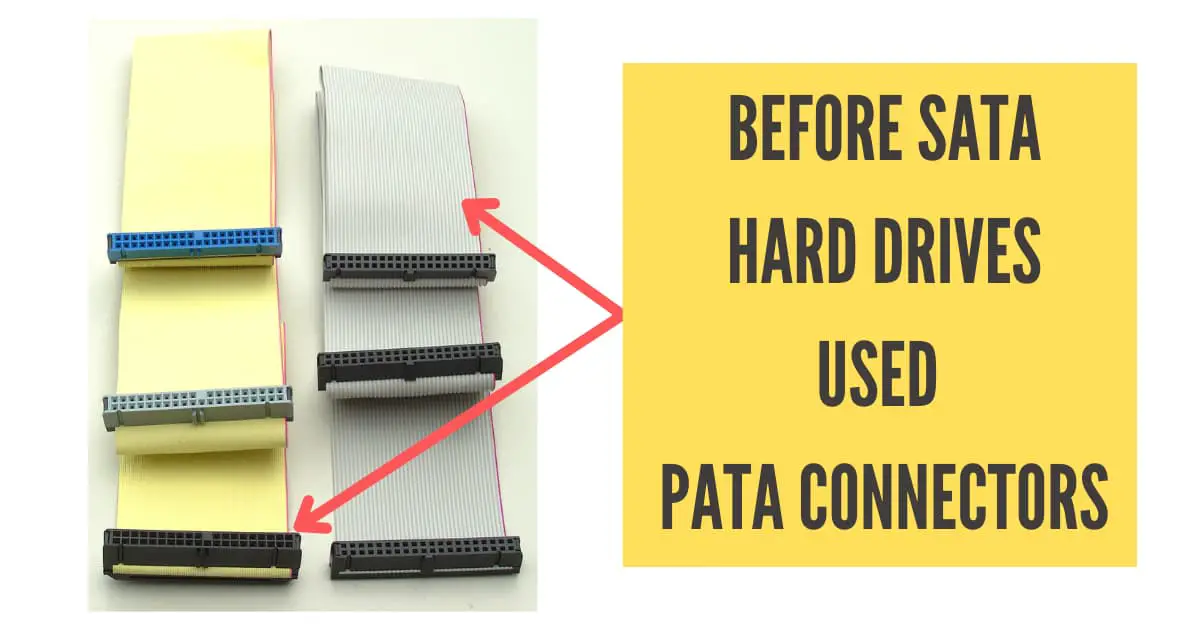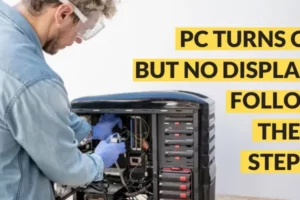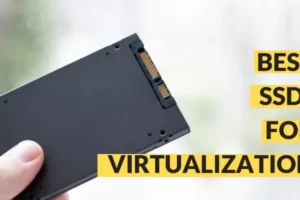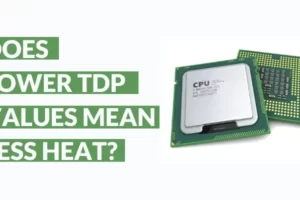Are SATA SSDs worth it? The question has substance for a variety of reasons.
There was a time, and not that long ago, when you would get a top-of-the-line NVMe SSD for a blazing $1500.
As of today, you can get the same SSD for just shy of $250.
Storage technology is advancing at a rapid pace.
For a time, the only way to speed up your PC was a RAM upgrade or getting new core parts like the CPU.
After the advent of SSDs, the whole hardware community unanimously agreed on the point that swapping an HDD for SSD is the best way of making your PC more snappy and responsive.
In the domain of SSDs, advancement ensued.
SATA SSDs were yes and still are extensively used but the eyes were always on the ‘newer and faster’ NVMe.
The only problem was the price tag. As I mentioned NVMe drives have competitive pricing today.
It wasn’t like this always.
So, invariably one asks the question.
Are SATA SSDs Still Worth It?
SATA is still a widely adopted way of connecting storage among old and new motherboards. You can use a limited number of NVMe drives as they tap into PCIe lanes. For gaming and general use, the real-world performance is similar, so yes, SATA SSDs are still worth it.
While that does answer the question but when it comes to pc hardware subjectivity is the name of the game.
A few years back NVMe drives were expensive but things were simple.
Today when the pricing is competitive let’s look at the different factors a little more deeply to understand why SATA SSDs are a worthy investment.
A Trip Down the ‘Memory Lane’
Before SSDs became a thing, all of us know HDDs were the major storage units across the hardware space.
And they used, you guessed it SATA connectors. But do you know what connectors were deployed before SATA?
Before SATA, mechanical HDDs exclusively used PATA (Parallel Advanced Technology Attachment) interface which used those old ribbon-type connectors.

Consumer SSDs when they came out used the SATA interface.
When it was established that SATA can also be used with HDDs, there was no reason really to keep those bulky, air-flow-restricting slow connectors around.
Another big reason for the push was the fact that the performance leap from mechanical drives to SSDs was a big deal.
With SATA connections in place, all you needed to do was swap in an SSD for HDD and experience more snappy and responsive PC operation.
By contrast, the performance leap from SATA to NVMe isn’t that profound.
As a matter of fact, for gaming and general use, you won’t even notice the difference (except if you are moving large files around).
So a few years back, paying a hefty premium for a small performance boost didn’t make sense.
As I said, the NVMe drives are quickly getting cheaper.
What happens when the price becomes so competitive that it overlaps?
Why are SATA SSDs Worth It Going Forward?
When it comes to SATA drives the benefits go much beyond just them being cheaper.
For PCs that want a lot of Storage(NAS)
For instance, if you wish to put a lot of storage into your PC, SATA storage is still the way to go.
A Network Attached Storage(NAS) is the perfect example of this.
Carrying this forward you must have observed that even high-end motherboards don’t support more than 3 NVMe drives and the most basic of motherboards will provide 4 SATA connections at the very least.
An argument can be made on how inconvenient it can get to connect so many SATA drives.
But if you are open to a little DIY, you can easily work up an arrangement for SATA SSDs.
I speak from experience as I am in the middle of creating a NAS box using my old PC.
Subscribe so that I can let you know how it goes.
Convenience
Say, you are actually creating a high-capacity NAS PC and need more SATA ports.
No problem, a good-quality expansion card is your answer.
Swapping SATA drives is as easy as it can get, an M.2 drive on the other hand needs to be screwed down.
Bandwidth
One of the biggest considerations with NVMe drives is the bandwidth.
Using an NVMe SSD will mean you are going to use some of the PCIe lanes(4, in most cases).
Most modern motherboards support one graphics card and one NVMe drive.
Go more than this and you will need to allocate how many lanes go to which device.
Graphics cards can generally work well at x8, but if you decide to go with more than 2 NVMe drives and let the GPU operate on x4, you will encounter performance problems in gaming.
SATA drives operate independently of the PCIe bus and connect directly to the chipset.
So, a SATA SSD will not interfere with anything you have connected to the PCIe slot.
A must read given the context: How to upgrade a PC for productivity and gaming?
Is NVMe worth it over SATA?
NVMe offers a read-write speed of 3.5 GB/s whereas SATA SSDs top out at 600MB/s. So, yeah, if you can manage it get one. But in real-world usage, for most people (gaming and general usage), the difference in performance isn’t going to be big enough to justify the difference in price.
Hey, if budget isn’t a concern why sacrifice? Go for the best.
As I said, the fact that the price gap between SATA and NVMe is quickly diminishing, so all the more reason to get an NVMe drive if you can.
But this hasn’t translated across the board along all brands of SSDs.
The point is you should not get entangled in the hardware lingo and all the different benchmarks to fixate on pricey hardware.
For a majority of use cases, the performance difference is too small to justify the steep difference in price.
So, a good quality (possibly with more capacity owing to the money saved) is still a very viable route to take.
If you ask me we are at a point in PC hardware space particularly storage where every bit of hardware has a place.
You see while NVMe drives are obviously fast, doesn’t mean SATA SSDs hold no value.
Extrapolating that even HDDs today hold a lot of value.
You see, yes HDDs are super duper slow when compared with SSDs but you still pay a lot less per GB when it comes to HDDs.
This means HDDs are still the go-to drives for say archival storage.
If you ask me an ideal system must have all three.
An NVMe boot drive that has sufficient space for main applications and games, a work SATA SSD drive to store your immediate work files and folders, and a third high-capacity HDD archive to store say raw video files and whatnot.
Now, of course, this isn’t needed for everyone reading this. But this arrangement sure is a content creator’s dream.
And maybe throw an HDD NAS storage into the mix and sweeten the pot.
Is SATA SSD Good for Gaming?
Now, what about gaming, how effective are SATA SSDs for gaming when seen in reference to NVMe and HDDs?
Going from HDD to SATA SSD the performance leap is huge in terms of game loading times and general responsiveness. Note that SSDs don’t do anything for the actual game performance. That’s the CPU, and GPU domain. From SATA to NVMe SSD, the leap isn’t as significant. In fact, for gaming and general propose use, you will hardly notice it.
So, SSDs in general do actually improve gaming performance but not in a direct sense is what I want to say.
With an SSD in place, your PC will immediately become more responsive, it will feel more snappy, and the application and game loading times will drastically improve.
Additionally, you will experience much smoother gameplay and for drive-intensive games, SSD will help in eliminating micro stutters.
There is so much more to how SSDs impact gaming.
Relaying all of that here will mean the article will get unnecessarily long.
But don’t worry I have already covered how SSDs impact gaming in a separate article.
The article is packed with benchmarks and insights regarding SSDs and their performance in gaming.
I highly recommend you go ahead and give it a read.
Your knowledge will become much more comprehensive. I can guarantee you that.
Conclusion,
So, what did we learn today when the context is SSDs
- Storage is one of the fastest-evolving technology when it comes to the hardware space.
- While the pricing is getting competitive, SATA SSDs haven’t lost their shine and possibly won’t lose it in the near future.
- For large storage systems, SATA SSDs are still king.
- NVMe drives are fast but use-up PCIe lanes for functioning.
- NVMe drives are of course better than SATA in raw speeds but for gaming and general performance, the performance improvement isn’t noticeable over newer SATA SSDs.
- Your system at the very least must have a SATA SSD. It makes the system responsive and improves application and gaming load times.
That was the essence of everything that we learned today.
But of course, as you saw, bare points without a subjective basis don’t form meaningful knowledge.
And I hope with the article I was able to provide that for you.
Solid state drives in their evolution journey are at a very interesting stage, performance, and technology-wise.
I am really looking forward to where it all goes now.
If you have any other queries, comments, questions, or feedback regarding SSDs and their performance, just shoot them in the comments below.
Don’t you leave this article without subscribing.
My little family of tech freaks will love your presence.
Take care of yourselves for me and I will see you at the next one!
Bye!





